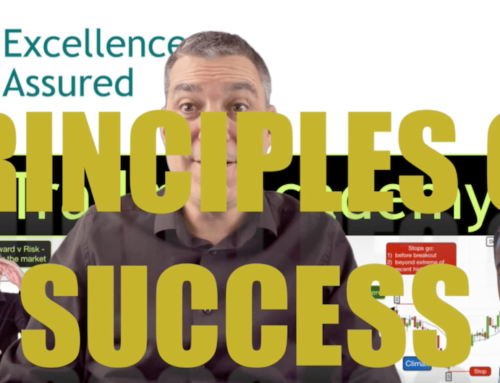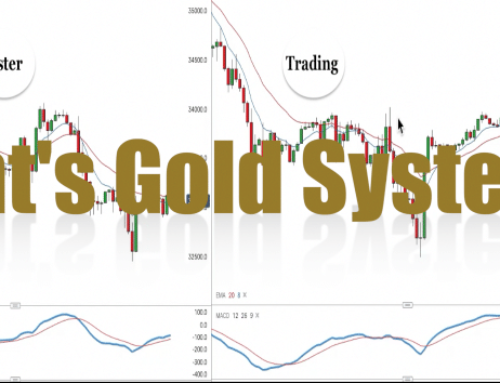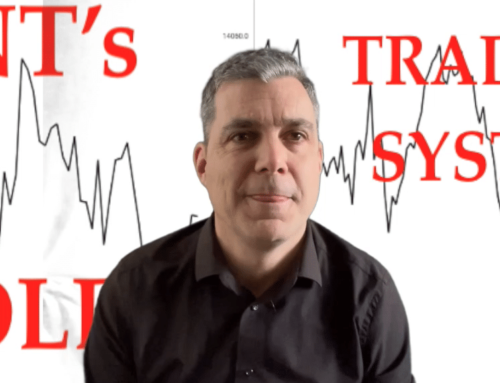I hope that you have already found this series useful and are beginning to understand yourself better in terms of how to build a successful trading future with the right mindset and some tools for mastering the emotional and psychological side of trading.
We have discussed how beliefs are important in trading and how to build the right beliefs about yourself as a trader. In article six of this series we are going to take this a step further now and look at how beliefs about the market form, how the market manipulates beliefs and how you can use this knowledge to make money.
Forming beliefs in trading
Essentially we form beliefs about the direction that the market is going to go in by looking at charts, listening to the news or sometimes we just get a feeling. We assume the belief that the market is going to go up or down. Once assumed we become a bull or a bear and we think in terms or bullish thoughts or bearish thoughts.
Once we have become a bull in our mind our brains seek evidence that would confirm to us that the market is going up. Once we become a bear the same happens, we only see the market action through the eyes of a bear trader. We tend to ignore signals that would indicate the opposite. We want to be right!
We need to remain objective in trading to see the truth and I am going to give you some tools to help you with that later in this series. 90% of the time both bulls and bears are able to make money in the market as long as they manage their trades correctly. 100% of the time we can lose money in trading by managing our trade poorly and taking impulse trades based on incorrect assumptions.
How do beliefs about the direction that the market is going to go in form? By us watching the market and forming assumptions and through our knowledge.
Have a look now at a price chart for your favourite market. There is one here. The price action is littered with spikes, isn’t it? I’m talking about the spikes on the end of the candlesticks on the chart. At one stage each of these spikes was a solid candlestick. Pay particular attention to the ones at the top and bottom of price swings. When the candlesticks at the top were full candles they would have been green. Green candlesticks reaching up into the sky. What sort of beliefs do you think that this would have created in the mind of some traders? They may have been thinking that the market looked like it could only go up, right?
What about the spikes at the bottom of price swings? When the candlesticks at the bottom were full candles they would have been red. Red canndlesticks reaching down to the ground. What sort of beliefs do you think that this would have created in the mind of some traders? They may have been thinking that the market looked like it could only go down, right?
Beware of market manipulation
This is how the market manipulates beliefs. Traders who bought and sold at the extremes here lost money and they lost money because they were duped into adopting a false belief.
As a beginner trader we see a big green bull candle and we think that the market is going up. We see a big red bearish candle sticking out of the bottom of a support level and we think that the market is going down.
Once we have formed a belief about the market direction we tend to become oblivious to the other side of possibility, we see the market through the perception of the bulls or the perception of the bears.
Let’s assume we see the market approaching a key resistance area. We watch as the market approaches. “Is it slowing down?” we say to ourselves. The market ticks back a little bit “Is it turning?” We say to ourselves. The market starts moving down a bit. “It is turning!! I was right. I’m getting in before I start losing out.”
The market resumes its move upwards. “It is still moving up very slowly. That’s a sign that it is going to turn.” We say to ourselves. The market pulls back again slightly to the resistance level. “I’m staying in my trade, it is going to go down.” The market then powers on upwards and takes out our stop.
Once in our trade we only saw the action through the eyes of a committed bear trader. We missed the obvious. The market was going up! The market broke out of resistance, pulled back and then confirmed the breakout.
We need to remain objective in trades and as we watch the market action. We need to remain objective and open to both bull and bear points of view as we sit on the sidelines considering trades. We need to take trades with a positive mathematical equation and we need to understand that trading is about judging probability not being right.
How beliefs influence us – Example
Here is an example of how beliefs form in the market and how they can influence us.
We watch pre-market price action. The market is going up and is in a bull trend on our chart. We begin to suspect that the market will open up strongly. We become a “bull”.
We check a higher timeframe. The market is currently in the upper third of a trading range.
We flick back to our shorter timeframe chart. The market is still going up.
The market opens and price ticks up. We think “it is definitely going to go up.” This is now a belief that we have. Suspicion and initial evidence. We wait for confirmation. We get a big green candlestick. “I am right the price is going up.” Belief confirmed. “If price goes above the high of this candle when the next candle opens then I’m going to take a trade long.” Price continues upwards on the next candle. We sit there convinced that price is going up.
What we have failed to remember, or what we have unconsciously ignored is that price is in a long term trading range and we are now at the top of the range. We have been blinded to the bear side of probability by our 100% belief that the market is going up.
Price immediately starts reversing and ticking down. We are now in a losing trade. “It’s a temporary blip. It’ll go up.” Price pauses.
Just as we begin to suspect that we may have been wrong it starts going up again. Not far enough for us to get out even but enough for us to resume our belief that it is going to go up. We then sit in our chair convinced that the market will go in the direction of our belief until we are shaken out of our trance by the market stopping us out or our losses becoming so huge that we cannot stand the pain any longer.
Here is the order in which beliefs are formed: Suspicion or logical conclusion based on past history or current events. First evidence – suspicion confirmed. Confirmation evidence.
Here is the bear side of the same events.
Our pro trader sees price going up pre-market. He takes a look on a higher timeframe and sees that price is approaching the top of a trading range. He knows that the probability is that when price is in a trading range it will stay in the trading range rather than break out. He is prepared to keep an open mind but his inclination is to take sell trades from the top of the range if the market gives specific reversal signals.
He sees price rise as the market opens. This is no surprise. “There are only amateurs buying here and no-one is selling yet (because they know that they can sell from a higher price in a few minutes time). Price will reach the upper level of the trading range and then we will see the big players enter short. “ He thinks to himself. He knows that the probability is 80/20 in favour of price staying in a trading range rather than breaking out. He knows that the other bigger market players also know this.
He sees price pause at the upper level of the range. He waits. Price starts falling and he gets the reversal signal that he was waiting for. This is his confirmation that the trade has a good probability of completing successfully. He takes his trade short.
At this stage, to the untrained eye it looks highly unlikely that the market will fall, however, all is not as it seems in the markets.
The thing with markets is that price action only takes account of actual trades completed and ignores traders intention to trade. It ignores the intentions of traders watching on the sidelines and the intentions of current market participants.
As the pro watches his trade he sees prices rise temporarily. “That is ok.” He says to himself. “They often test the previous high before falling.” He isn’t believing what he is seeing. He is believing in his system, his knowledge and in the laws of probability.
He knows that he will probably make money on the trade. He knows that he may not and that is ok with him. He waits to find out. Either way he stood by his system and therefore he will be right even if he isn’t successful on this one trade. This is how pro traders think and behave.
Join us on our online trading course to learn how to manage your trades, spot chart patterns and develop into a consistently profitable trader.







Leave A Comment